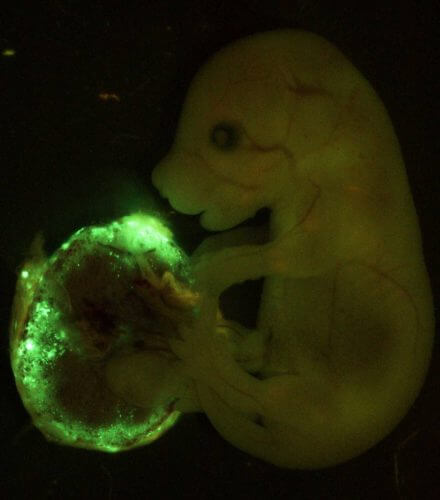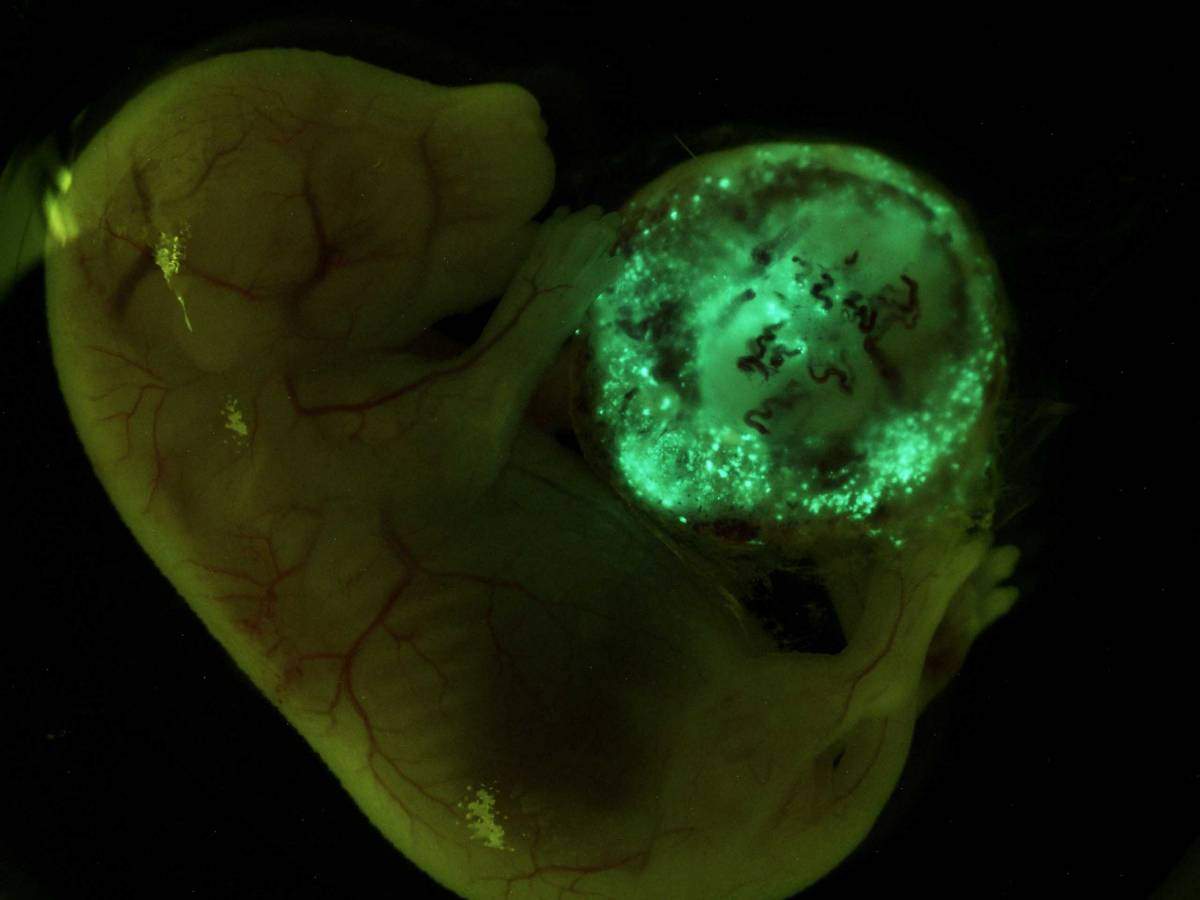Between mother language and programming language: how does the placenta mediate messages between mother and fetus?
-

A mouse embryo and the genetically engineered placenta that feeds it. programmed for anorexic behavior. Photo: Weizmann Institute
Parents educate their children and explain to them the way of the world from their infancy. But communication between parents and children begins even before birth: the mother conveys messages to the fetus to prepare it for the world it will emerge into. Despite the recognition of the enormous impact that these messages may have on the health of the newborn, the mechanisms that mediate the communication between the mother and the fetus are unknown. A new study by Weizmann Institute of Science scientists reveals a molecular communication mechanism during pregnancy, which may affect the chances of developing an eating disorder in adulthood. the study Recently publishedin the scientific journal Nature Communications..
"The mother's ability to convey messages to the fetus has an evolutionary-survival reason," says Prof. Alon ChenFrom the Department of Neurobiology at the Weizmann Institute of Science. "For example, if the mother lives in a poor area where there is not enough food, she will want to convey the message to the fetus that he must build his body efficiently and economically, and slow down his metabolism." These broadcasts are usually called "programming". But what happens when there is a discrepancy between the "programming" and the living conditions and requirements in reality? Prof. Chen explains: "A fetus that is 'programmed' to slow down its metabolism, but was born into a culture of high-calorie abundance, may develop obesity and metabolic syndrome."
In a previous study in Prof. Chen's laboratory, the scientists showed how compulsive eating disorder is affected by messages coming from the mother during pregnancy following exposure to stress. In the current study, led by Dr Mariana Schroeder, who was a post-doctoral researcher in Prof. Chen's laboratory, the scientists focused on anorexia nervosa - an eating disorder that has the highest mortality rate among mental illnesses. Anorexia is characterized by self-starvation, usually erupts in adolescence, and is 10 times more common among women. The tendency to develop anorexia was also linked in the past to stress factors in the early stages of life. To test whether the communication between the mother and the fetus affects the chances of developing anorexia, the researchers developed a model that simulates the disorder in mice.
Anorexia is often seen as a disorder that characterizes adolescent girls under the influence of Western culture and the cult of the body. But even without being exposed to the fashion and advertising industry, the disorder broke out among the mice in the experiment, mainly among females in "adolescence". However, contrary to predictions, mice born to mothers who were "stressed" during pregnancy, did not tend to exhibit anorexic behavior in adulthood. "The findings showed that stress during pregnancy is an apparent 'storehouse' against anorexia," says Prof. Chen.
It must be remembered that, on the one hand, there is an evolutionary 'interest' in adapting the fetus to the environment in very short periods of time, but, on the other hand, the fetus is also very protected in the womb, and should not feel any fluctuations in the mother's stress levels."

Despite the surprising findings, the strong effect on the susceptibility to anorexia indicated a relationship, even if the opposite of what was expected, between messages from the mother and the development of anorexia in adulthood. This type of communication is expected to pass through the placenta - the connecting organ between the mother and the fetus, through which food and oxygen are supplied to the fetus. In an attempt to locate the molecular mechanism that mediates the messages, the scientists mapped the levels of microRNA - molecules that control protein production - in the placenta, and found one molecule whose expression dropped following the stress of pregnancy. This molecule was found, to begin with, in much higher amounts (10 times) in the placentas of fetuses compared to placentas of fetuses, regardless of exposure to stress. That is, in some ways, fetuses exposed to stress became more "masculine", and therefore perhaps more protected against anorexia.
In order to establish a causal link between this molecule and anorexia, the researchers, using a unique method, created transgenic placentas in which there was an increased expression of the microRNA molecule. The findings were amazing: fetuses fed from these placentas exhibited a high sensitivity to anorexia in adulthood; About 70% of the females exhibited quasi-anoretic behavior, compared to about 40% in the control group, and even about 50% of the males developed anorexia - compared to only about 10% in the control group. "In this context," explains Prof. Chen, "one must remember that, on the one hand, there is an evolutionary 'interest' in adapting the fetus to the environment in very short periods of time, but, on the other hand, the fetus is also very protected in the womb, and should not feel any fluctuation in pressure levels of the mother The mother does experience the environment, but the placenta knows how to block and filter the outside world. For example, when the levels of the 'stress hormone', cortisol, jump because the mother is stressed for one reason or another, an enzyme found in the placenta comes into action, and it breaks down cortisol and turns it into cortisone, which is the inactive form of the hormone."
But if the fetus is so protected, how could a change in the expression of one tiny molecule in the placenta jeopardize its future? Or, in other words, how do messages from the mother penetrate through the placenta after all, and change the developing brain of the fetus? The researchers discovered that the microRNA molecule they found affects the production levels of proteins that play an essential role in placental function. As a result of this change, the expression of the proteins in the hypothalamus of the fetuses also changed dramatically, that part of their brain which is responsible, among other things, for controlling eating, and deficiencies in its activity were previously linked to outbreaks of anorexia in humans. Prof. Chen concludes: "The placenta is not just a system that transports blood. It has a very important role in the development of the fetus. The placenta responds to the mother's external signals - what she drinks, what she eats, what she experiences - and can block these signals or pass them on to the fetus, thus influencing its 'programming': its state of health, and its chances of developing diseases in the future, including disorders eating".

|
The model that simulates anorexia in mice allows them to choose between a running wheel and food. A mouse runs about 5 kilometers a day. Mice, especially female mice, that exhibited anorexic behavior, gave up eating, and ran up to 15 kilometers per day. After they lost about a quarter of their weight, the wheel was removed from the cage, and the experiment was stopped. #Science_Numbers
|

One response
Beyond programming language, what is interesting is that each animal has a kind of pre-burned ROM memory adapted to it.
How does a lion know that he should saturate with a lioness or a mouse with a female mouse? And how do they even know what needs to be done?
There are actions built into the brain that we all know exactly what needs to be done from the day we were born